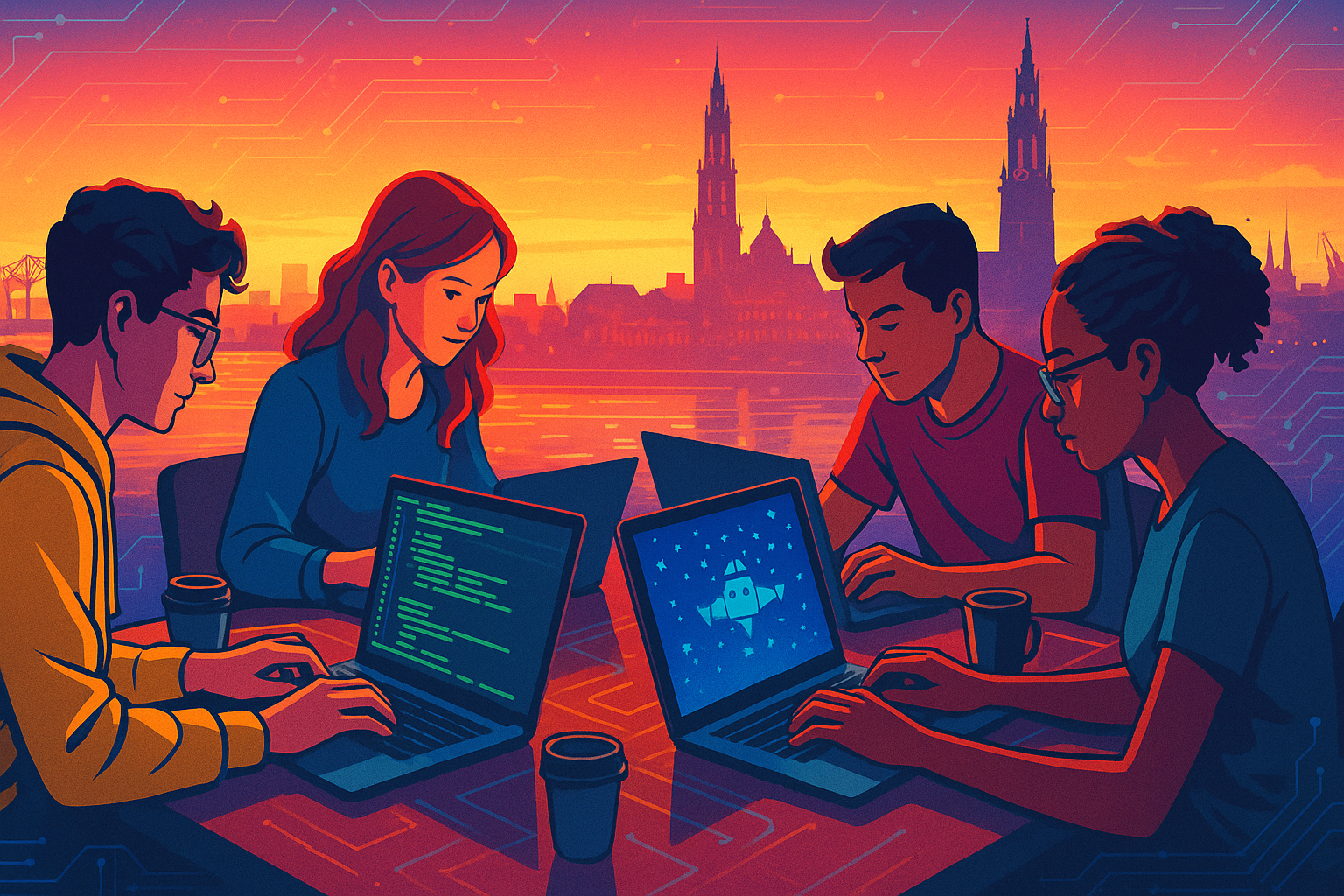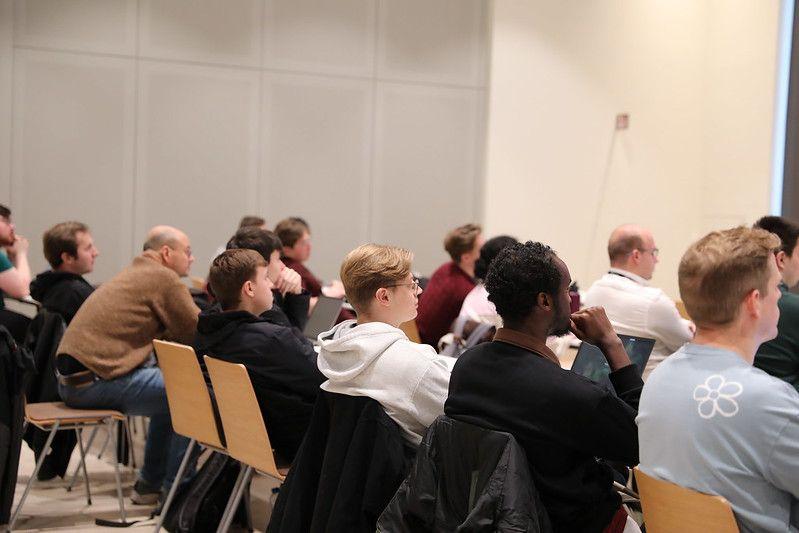Hack the future hackathon

Event Overview
Recently, I had the opportunity to participate in “Hack the Future,” an annual hackathon organized for all Belgian tech schools. This year’s edition took place in Antwerp and brought together 15 teams from across the country, each tasked with building innovative projects over the course of a single day.
Registration & Preparation
- Registration: A few weeks before the event, each team registered online and received preliminary project briefs.
- Preparation: In the days leading up to the hackathon, my teammates and I sketched out initial ideas and brushed up on Java game development.
Journey to Antwerp
- Early Start: We boarded a school bus at dawn, embarking on a three-hour journey.
- Team Bonding: The trip flew by as we chatted, shared music, and played mobile games—by the time we arrived, it felt like no time had passed at all.
Kickoff & Introductions
- Check-In: Upon arrival, we each received badges indicating our team assignments and project details.
- Breakfast: A self-serve spread of coffee, tea, and pastries fueled us for the day ahead.
- Briefing: Organizers explained the hackathon rules—project scope, scoring criteria, and submission deadlines—before escorting each team to its dedicated workspace.
Project Challenge
Objective:
Develop a Java-based game in which a player’s ship must withstand randomized waves of enemy attacks.
Key Requirements:
- Simulate successive attack rounds of increasing difficulty.
- Allow pre-testing to fine-tune defensive strategies.
- Implement a scoring system based on weapons saved, crew remaining, and ship integrity.
Technical Approach & Strategies
- Initial Prototype: During the test phase, our ship easily withstood every scripted attack, thanks to conservative resource management and defensive prioritization.
- Randomized Simulation: In the official runs—where attack patterns were randomized rather than sequential—our ship faltered quickly.
- Strategy Iterations:
- Weapon Allocation: Balancing offensive power vs. preserving munitions.
- Health vs. Crew: Deciding whether to sacrifice crew members to save ship hull integrity.
- Risk Analysis: Estimating attack probabilities and adjusting thresholds dynamically.
Each failed simulation informed tweaks to our algorithms, making the ship progressively more robust.
Results & Awards
- Final Ranking: We placed 8th out of 15 teams—respectable, though shy of the podium.
- Team Recognition: Our group nominated a standout teammate for the “Best Team Player” award. He received a premium music-streaming stereo, making our school proud.
- Other Winners: Prizes ranged from hardware peripherals to software licenses, depending on each project’s focus.
Networking & Activities
- Lunch Break: A catered lunch gave us time to connect with students from other schools.
- Antwerp Zoo Visit: In the afternoon, we toured the city zoo, marveling at elephants, giraffes, lions, monkeys, leopards, and the aquarium. It was a refreshing reminder of nature’s complexity, much like the systems we program.
- Evening Coffee Chat: Over coffee, we exchanged contact details and discussed collaboration opportunities.
Reflection & Future Plans
Participating in Hack the Future was both challenging and rewarding. Key takeaways:
- Preparation Is Crucial: More rigorous pre-event testing of randomized scenarios would have improved our final performance.
- Adaptive Algorithms: Building flexibility into our code—rather than hard-coding thresholds—can better handle unpredictability.
- Team Dynamics: Effective communication and clear role assignments accelerate development under time pressure.
I look forward to returning next year, armed with new strategies and a deeper understanding of rapid-prototyping best practices.
Hackathon Gallery

Picture taken in session moment
Written by
Sayidali Ibrahim